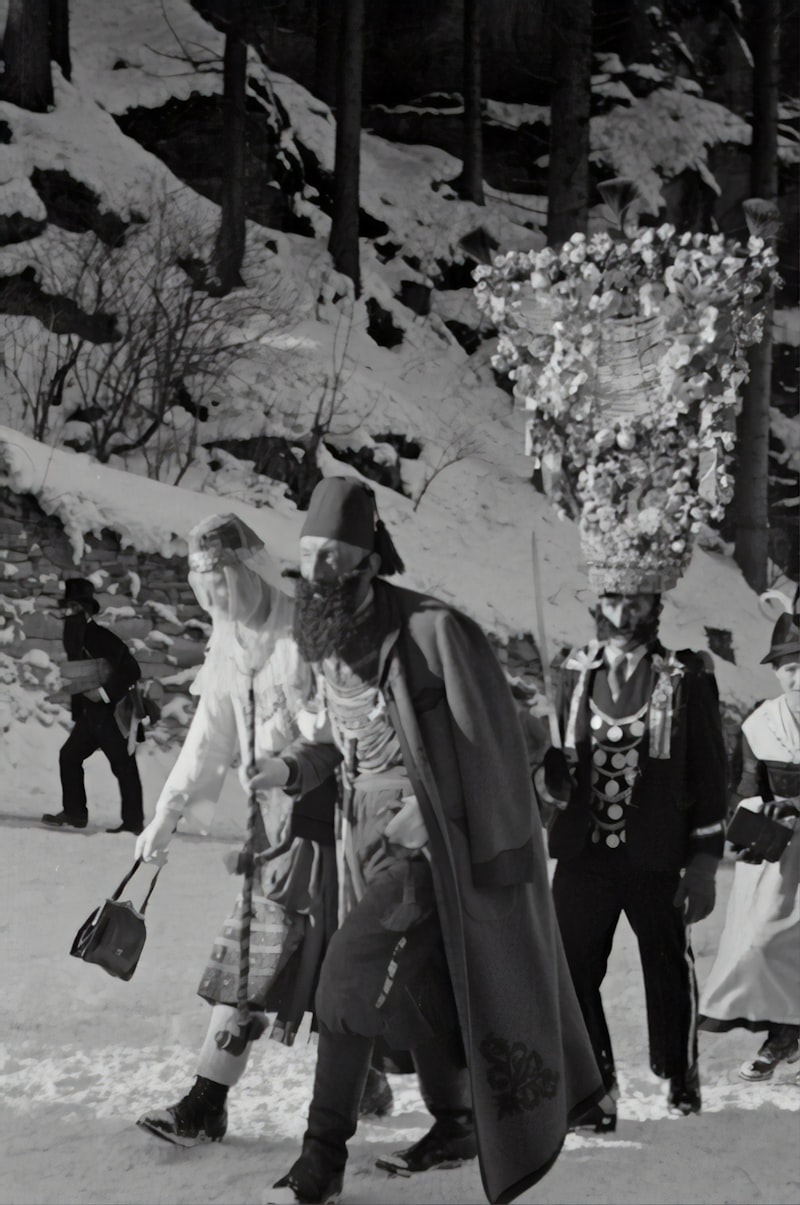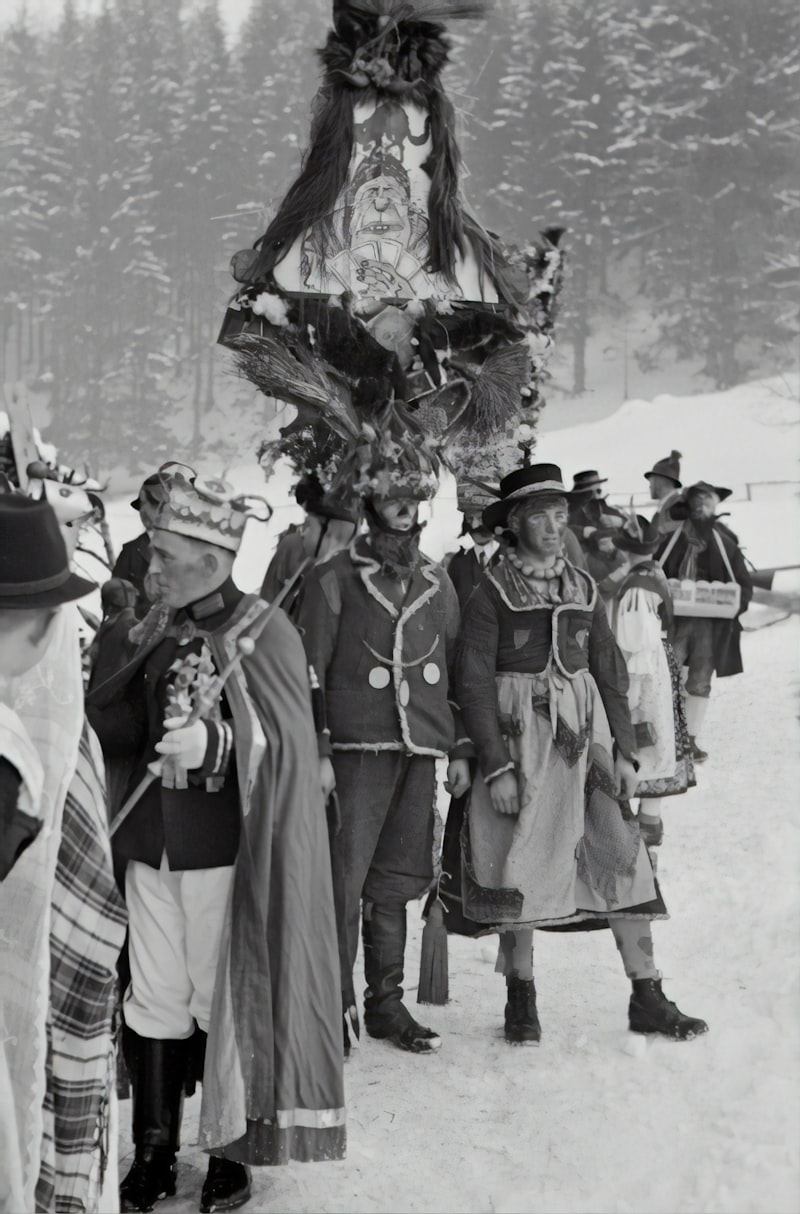
Take the Catacombs of Paris, for instance. Deep beneath the bustling streets of Paris lie miles of tunnels lined with the bones of over six million people. It’s a chilling reminder of mortality and the city’s turbulent past. As you wander through this macabre labyrinth, you can’t help but wonder about the lives and stories of those laid to rest here centuries ago.
Or consider the ancient city of Pompeii in Italy, frozen in time by the catastrophic eruption of Mount Vesuvius in 79 AD. Walking through its eerily preserved streets, you can almost hear the echoes of Roman life — the chatter of citizens, the clatter of chariots. The petrified remains of its inhabitants and the haunting plaster casts of their final moments add a poignant layer to its ghostly allure.

In Cambodia, the haunting ruins of Angkor Wat rise majestically from the jungle. Built in the 12th century as a Hindu temple and later transformed into a Buddhist site, its intricate carvings and imposing architecture evoke a sense of ancient grandeur. At sunrise or sunset, when the temple is bathed in golden light, it’s easy to believe in legends of gods and mythical beings that once roamed its halls.
Moving to Japan, Aokigahara Forest at the base of Mount Fuji has earned a sinister reputation as the “Suicide Forest.” Its dense foliage and quiet stillness mask the tragic stories of those who have come here to end their lives. The forest floor is littered with reminders of their presence — abandoned belongings, markers left by search parties. Yet amidst the sadness, there’s a strange beauty in its tranquility.
Lastly, the Tower of London in England stands as a formidable fortress with a dark past. Over the centuries, it has served as a royal palace, a prison, and a place of execution. The chilling tales of its famous prisoners, like Anne Boleyn and Sir Walter Raleigh, linger within its walls, making it a magnet for ghost hunters and history enthusiasts alike.
These sites, each with its own eerie charm, remind us of the layers of history that shape our world. They challenge our imagination and compel us to confront the mysteries of the past that continue to captivate us today.
Ghosts of History: Exploring the Haunted Charms of Eastern State Penitentiary
Nestled in the heart of Philadelphia lies a place steeped in history and mystery — Eastern State Penitentiary. Once a pioneering institution in the world of corrections, today it stands as a haunting reminder of a bygone era. The penitentiary, with its towering Gothic architecture and crumbling cellblocks, beckons visitors from around the globe to explore its eerie corridors and uncover the stories of its spectral inhabitants.

Built in the early 19th century, Eastern State Penitentiary was a revolutionary concept in penal design. Its imposing walls and radial cellblocks were meant to inspire reflection and penitence in its inmates, who lived in solitary confinement, shrouded in silence. Over the years, however, the harsh realities of isolation and confinement gave rise to tales of despair and anguish within these cold, stone walls.
Today, Eastern State Penitentiary is renowned not only for its historical significance but also for its paranormal activity. Visitors and paranormal enthusiasts alike flock to the penitentiary in search of ghostly encounters and unexplained phenomena. From shadowy figures haunting cellblocks to inexplicable sounds echoing through empty corridors, the penitentiary’s ghostly reputation has cemented its status as one of America’s most haunted places.
Exploring Eastern State Penitentiary is a journey into the unknown, where history and mystery intertwine. As you walk through its decaying halls and peer into abandoned cells, you can almost feel the presence of the inmates who once dwelled within. Each crumbling wall and rusted iron door tells a story of confinement and solitude, inviting you to delve deeper into the penitentiary’s haunted past.
Whether you’re a history buff, a paranormal enthusiast, or simply curious about the darker side of America’s past, Eastern State Penitentiary offers a captivating glimpse into a world long forgotten. So, dare to step through its gates and uncover the haunted charms that await within.
Chernobyl’s Silent Echoes: Unveiling the Eerie Secrets of the Exclusion Zone
Imagine stepping into a realm frozen in time, where nature has reclaimed what was once its own. The eerie beauty of Chernobyl’s Exclusion Zone captivates visitors, offering a glimpse into a world where abandoned buildings stand as silent witnesses to the past. Rusting ferris wheels and overgrown amusement parks evoke a sense of surreal nostalgia, a stark contrast to the devastation wrought by the explosion at Reactor No. 4.
Nature, surprisingly, thrives amidst the remnants of human habitation. Wildlife roams freely, reclaiming the land inch by inch. Wolves roam where children once played, and rare species find refuge in this unlikely sanctuary. The resilience of life in the face of adversity is both astonishing and humbling.
But beneath this serene facade lies a chilling reality. The ghost town of Pripyat, once home to thousands of families, now stands empty and frozen in time. Personal belongings left behind tell stories of interrupted lives and shattered dreams. The eerie silence punctuated only by the occasional rustle of leaves or distant call of wildlife amplifies the sense of abandonment and loss.
Exploring Chernobyl’s Exclusion Zone is a journey into the unknown, where each step reveals layers of history and tragedy. Geiger counters click softly in the background, a reminder of lingering radiation levels that render certain areas uninhabitable for centuries to come. Yet amidst the desolation, there is a strange allure—a testament to the enduring spirit of humanity in the face of adversity.
Island of Dolls: Mexico’s Creepiest Tourist Attraction Revealed
The Island of Dolls, or Isla de las Munecas in Spanish, is not your typical tourist spot. Here, thousands of weathered and decaying dolls hang from trees, fences, and buildings, their vacant eyes staring into the abyss. Each doll has a tale to tell, a story whispered through the cracked porcelain and faded fabrics.
Legend has it that the island’s caretaker, Don Julian Santana Barrera, discovered a drowned girl in the canal and, in her memory, began hanging dolls to ward off evil spirits. Over the years, he collected dolls from trash heaps and canals, adorning the island with their eerie presence. Some say he believed the dolls to be possessed by the spirits of the dead, others claim he simply enjoyed their company.

Visitors to the Island of Dolls are greeted by a surreal sight: dolls in various states of disrepair, some missing limbs, others with tangled hair and grimy faces. The atmosphere is heavy with a sense of mystery and a touch of unease, as if the dolls themselves are silently watching your every move.
Despite its eerie reputation, the island attracts curious tourists and thrill-seekers from around the globe. It has been featured in numerous documentaries and TV shows, each attempting to unravel the secrets hidden among the dolls. For some, it’s a journey into the supernatural, a chance to experience firsthand the intersection of folklore and fear.
The Mystery of the Catacombs: Paris’ Dark Underground Labyrinth
Imagine wandering through narrow passageways where the air is cool and musty, the only light flickering from your torch. Each step echoes faintly, as if the walls themselves are murmuring tales of the past. The catacombs, originally ancient limestone quarries, transformed over time into a haunting labyrinth of tunnels lined with the bones of millions.
Beneath the City of Light, these catacombs stretch like a hidden underworld, revealing layers of Parisian history. They became a repository for bones in the late 18th century, a solution to overflowing cemeteries that posed health risks. Now, they stand as a solemn reminder of mortality and a testament to the city’s tumultuous past.
Walking through these underground passages feels like stepping into a different era, where every stone has witnessed centuries of human existence. It’s not just a journey through space but through time itself, where the present momentarily dissolves into the shadows of the past.
Why are these catacombs so captivating? Perhaps it’s the eerie silence that envelops you or the thrill of exploring a place where few dare to venture. It’s an experience that evokes both awe and reverence, a reminder of the impermanence of life and the resilience of history.
Auschwitz: Witnessing the Ghosts of Europe’s Darkest Past
Walking through Auschwitz, every step echoes with history. The barracks, stark and solemn, stand as silent witnesses to the atrocities committed here. The barbed wire fences, once instruments of confinement, now symbolize the resilience of the human spirit in the face of unimaginable cruelty.
One cannot help but feel a profound sense of disbelief and sorrow while gazing upon the remnants of gas chambers and crematoria. These chilling structures, where countless innocent souls perished, serve as a stark reminder of the horrors that unfolded within these walls.
Yet amidst the sorrow, there is also a call to remember. Visiting Auschwitz is not merely an act of witnessing history but a solemn obligation to honor the memories of those who suffered and perished here. It is a testament to the resilience of the human spirit and a reminder of the importance of preserving the lessons of the past for future generations.
As I walked through the Auschwitz Memorial and Museum, I was struck by its meticulous preservation of artifacts and documents. Each exhibit tells a story of loss and survival, of despair and hope. The personal belongings of victims — shoes, glasses, and suitcases — silently plead to be remembered, their owners’ identities forever lost to the brutality of genocide.
Standing at the memorial wall, inscribed with the words “Never Again” in multiple languages, I felt a surge of determination. It is a vow we must uphold, a promise to confront hatred and injustice wherever it may arise. Auschwitz compels us not only to remember but to actively strive for a world where such atrocities can never happen again.
In the shadows of Auschwitz, the ghosts of Europe’s darkest past linger. They urge us to bear witness, to educate ourselves and others, and to honor the memories of those who perished. Only through remembrance can we ensure that the lessons of Auschwitz are never forgotten.
Forbidden City: China’s Spectral Legends and Eerie Nights
Imagine walking through corridors where whispers of past emperors seem to echo in the stillness of night. Each courtyard and hall within the Forbidden City holds secrets, each brick telling a story of dynasties past. It’s a place where reality blurs with myth, where the boundary between the living and the spectral realms feels almost palpable.
As dusk settles over the grand courtyards, the Forbidden City transforms into a realm of shadows and half-seen figures. Stories abound of ghostly apparitions wandering the halls, of emperors long gone whose presence still lingers. Locals speak in hushed tones of encounters with spirits, their tales adding layers to the mystique that shrouds this architectural marvel.
The eerie nights of the Forbidden City cast a spell on those who dare to explore its depths. Lantern-lit pathways lead through gateways that once marked the divide between the earthly and divine. It’s as if time stands still here, preserving not just history but the essence of those who once walked these very paths.
In the embrace of darkness, the Forbidden City reveals its enigmatic allure. It beckons adventurers and historians alike to unravel its mysteries, to ponder the significance of each statue, each carving, each legend that whispers through the corridors. For in this imperial enclave, every stone has borne witness to the rise and fall of dynasties, to triumphs and tragedies that have shaped China’s history.
Frequently Asked Questions
How can I visit eerie historical sites safely?
Discover how to safely explore eerie historical sites with practical tips on navigating unknown terrain, ensuring personal safety with proper equipment, and respecting local regulations. Learn how to plan ahead, use reliable maps, and avoid risky behaviors to enhance your experience while preserving the site’s integrity.
Are there any famous ghost sightings at these historical sites?
Discover notable ghost sightings reported at various historical sites worldwide. Explore intriguing accounts and legends associated with these locations, adding a supernatural twist to your historical explorations.
What are some of the most haunted historical sites globally?
Discover some of the world’s most haunted historical sites, where tales of eerie occurrences and ghostly sightings have persisted through time.
Why are certain historical sites considered eerie or haunted?
Certain historical sites are considered eerie or haunted due to their association with tragic events, ghost sightings reported by visitors, or cultural beliefs in supernatural occurrences. These places often attract attention for their mysterious atmosphere and stories passed down through generations.
Which eerie historical sites offer guided tours or paranormal investigations?
Discover eerie historical sites with guided tours or paranormal investigations. Explore haunted locations with expert guides to uncover their mysterious past and supernatural phenomena.



